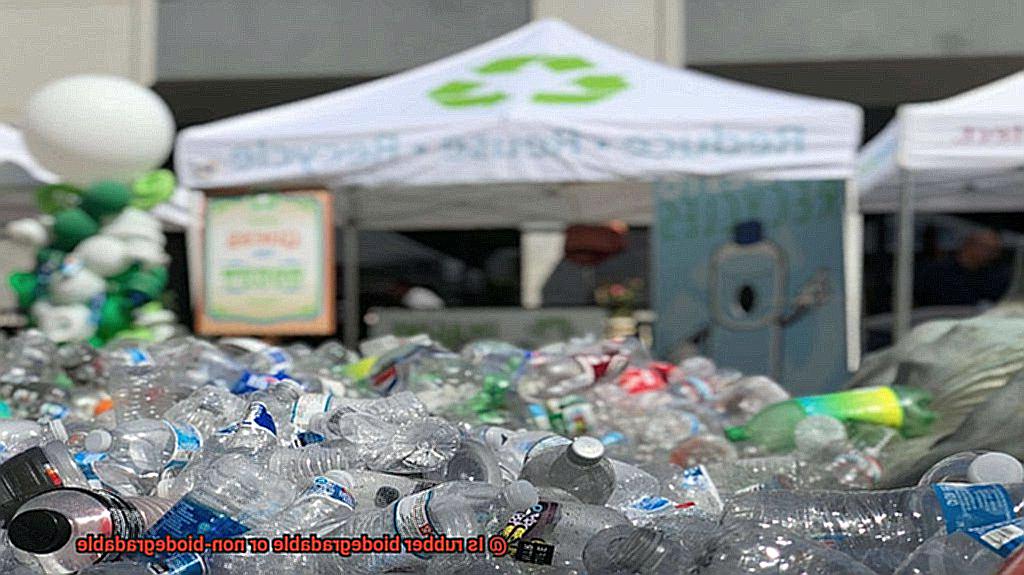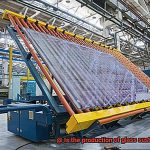Rubber is a ubiquitous material that we encounter in our daily lives. From the soles of our shoes to the tires on our cars, it plays a crucial role in various industries such as construction, manufacturing, and transportation. However, have you ever stopped to wonder what happens to rubber once it has served its purpose? Is it biodegradable or non-biodegradable? This intriguing question has puzzled scientists and environmental enthusiasts worldwide.
Rubber is made from latex, which is produced by some plants, and synthetic materials. Its durability, flexibility, and resistance to wear and tear make it an ideal material for many applications. However, these same properties also make it challenging to break down naturally. Rubber can take several years to decompose properly, and if not appropriately disposed of, it can become a significant threat to our environment.
In this article, we will explore whether rubber is biodegradable or non-biodegradable. We’ll delve into how long it takes for rubber to decompose and its impact on our ecosystem. We’ll highlight the dangers of rubber waste and discuss safe ways to reduce rubber pollution. Join us as we uncover the science behind this fascinating topic.
So buckle up and get ready to learn more about rubber’s impact on our planet. Whether you’re an environmental enthusiast or just curious about how everyday materials affect our world, this article will provide valuable insights into one of the most common materials used in modern society.
What is Biodegradability?
Contents
As we strive to become more environmentally conscious, understanding biodegradability is crucial. In simple terms, biodegradability means a material’s ability to break down naturally and be absorbed by the environment. This process is facilitated by microorganisms such as bacteria, fungi, or enzymes that convert the material into simpler substances.
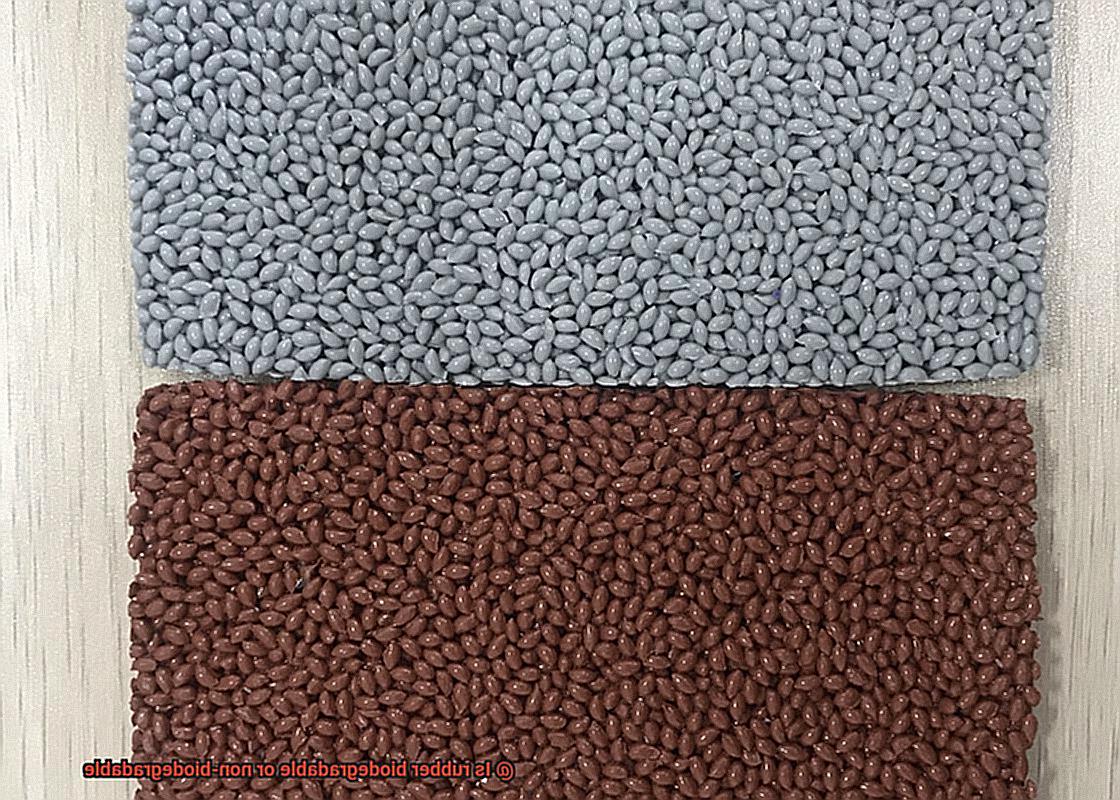
When choosing materials for products that will eventually be disposed of, biodegradability is an important factor to consider. Biodegradable materials can decompose relatively quickly, reducing waste in landfills and minimizing the environmental impact of human activity. Conversely, non-biodegradable materials take much longer to decompose and can accumulate in the environment, causing pollution and harm to wildlife.
However, not all biodegradable materials are created equal. Some require specific conditions to decompose properly, such as oxygen, water, or sunlight. Moreover, some may release harmful substances during the decomposition process.
Now let’s talk about rubber – a widely used material found in various forms such as natural rubber, synthetic rubber, and vulcanized rubber. Whether rubber is biodegradable or not depends on the type of rubber.
Natural rubber is an excellent example of a biodegradable material because it is extracted from the sap of rubber trees (Hevea brasiliensis), which is a renewable resource. Once discarded, natural rubber products break down gradually and get absorbed into the soil.
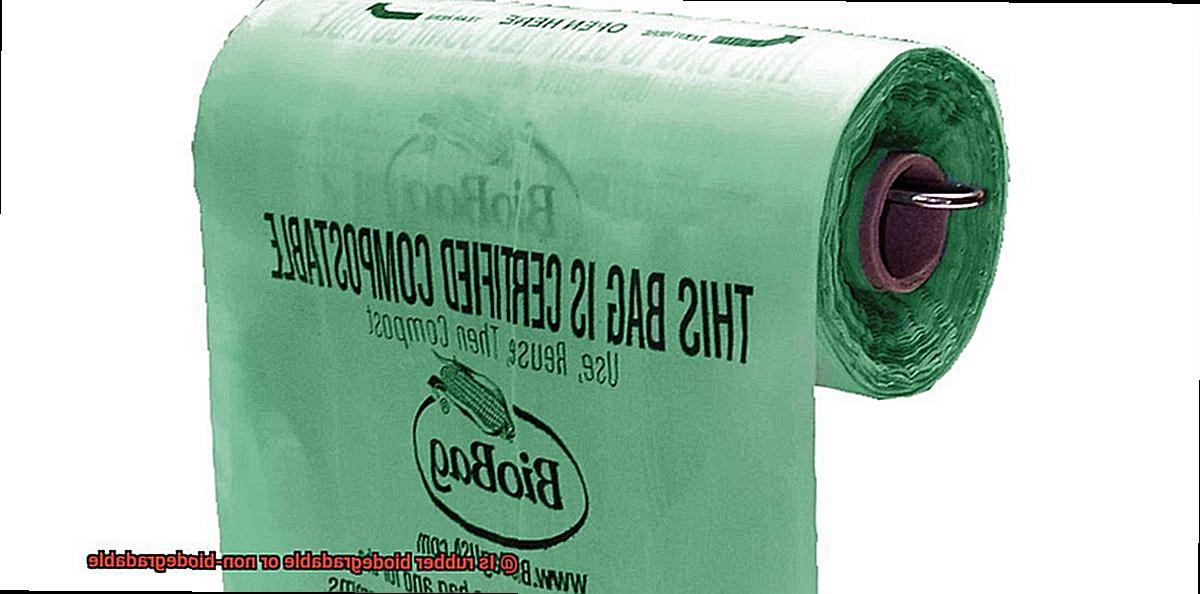
On the other hand, synthetic rubber is not biodegradable. It’s made from petroleum-based materials like neoprene, butyl, and styrene-butadiene rubber and does not decompose naturally. As a result, synthetic rubber products remain in landfills for hundreds of years.
Vulcanized rubber is another type of rubber commonly used across various industries. Though vulcanized rubber is durable than natural rubber, it’s non-biodegradable. As such, it poses significant environmental implications if not correctly disposed of.
Is Natural Rubber Biodegradable?
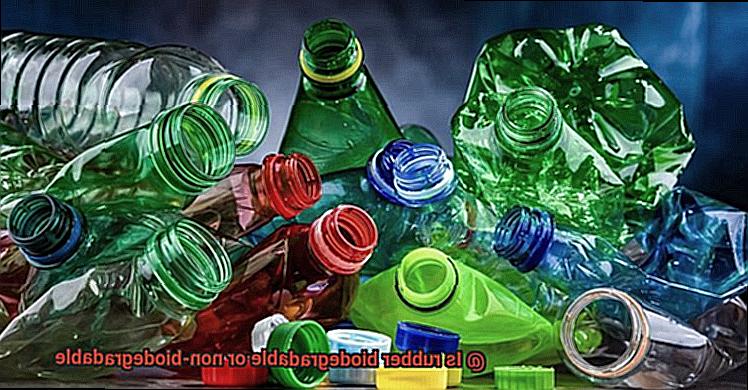
And the answer is a resounding yes. Natural rubber can be broken down into simpler organic compounds like carbon dioxide, water, and biomass by microorganisms. However, the rate of biodegradation depends on various factors such as temperature, moisture, oxygen availability, and the presence of microorganisms.
But here’s the thing: the biodegradability of natural rubber depends on its form and composition. For example, vulcanized rubber, which is chemically treated to improve its strength and durability, is less biodegradable than natural rubber. The treatment changes the structure of rubber molecules, making it tougher for microorganisms to break them down.
So while natural rubber is indeed biodegradable, it is essential that we use it in its natural form and avoid chemical treatments like vulcanization. By doing so, we can reduce the environmental impact of rubber waste and promote sustainable resource management practices.
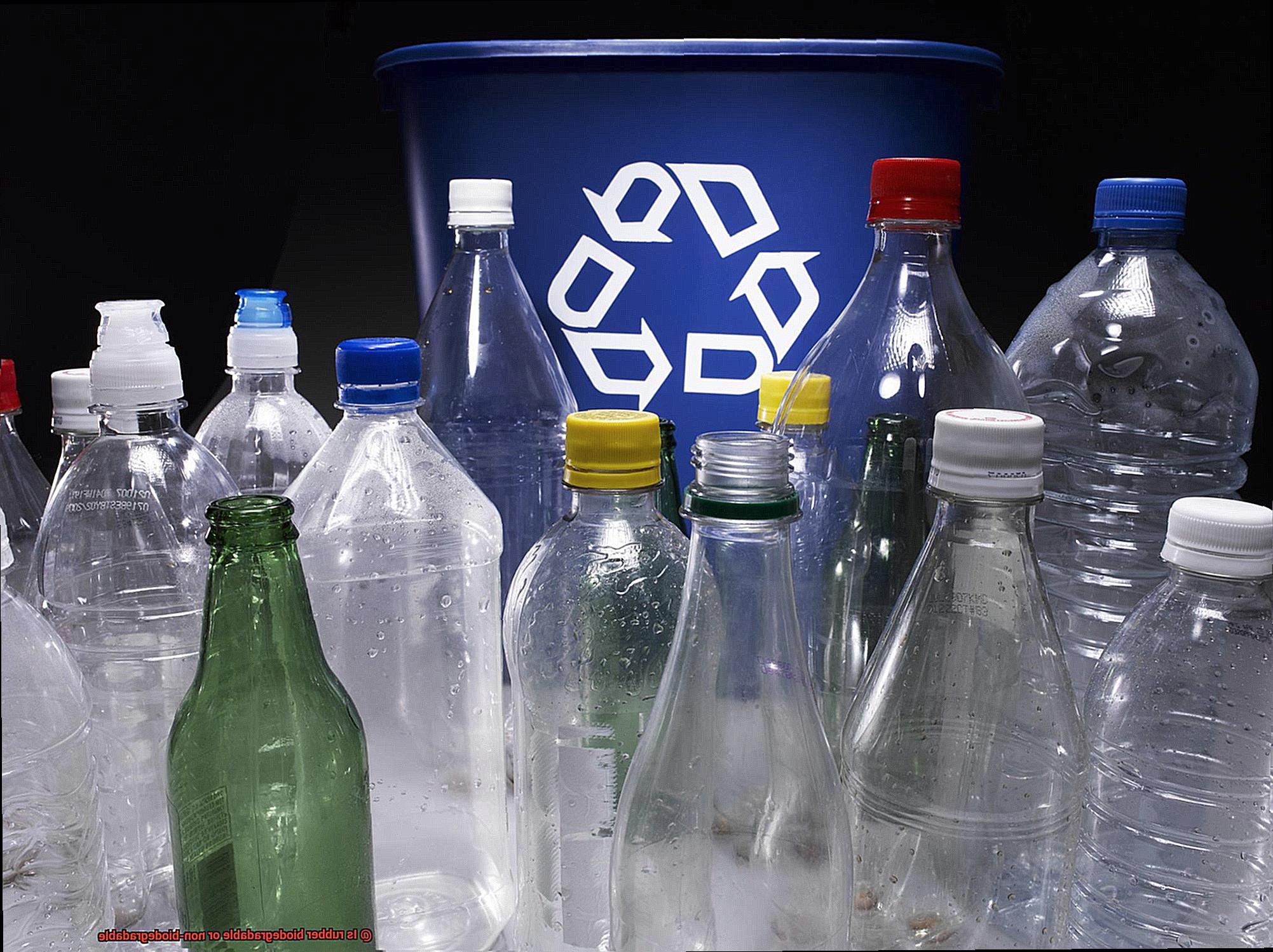
It’s worth noting that in natural conditions, it can take several months to years for natural rubber to fully biodegrade. However, we can speed up the process by using specific microorganisms or enzymes. For instance, certain fungi have been shown to enhance the biodegradation of natural rubber.
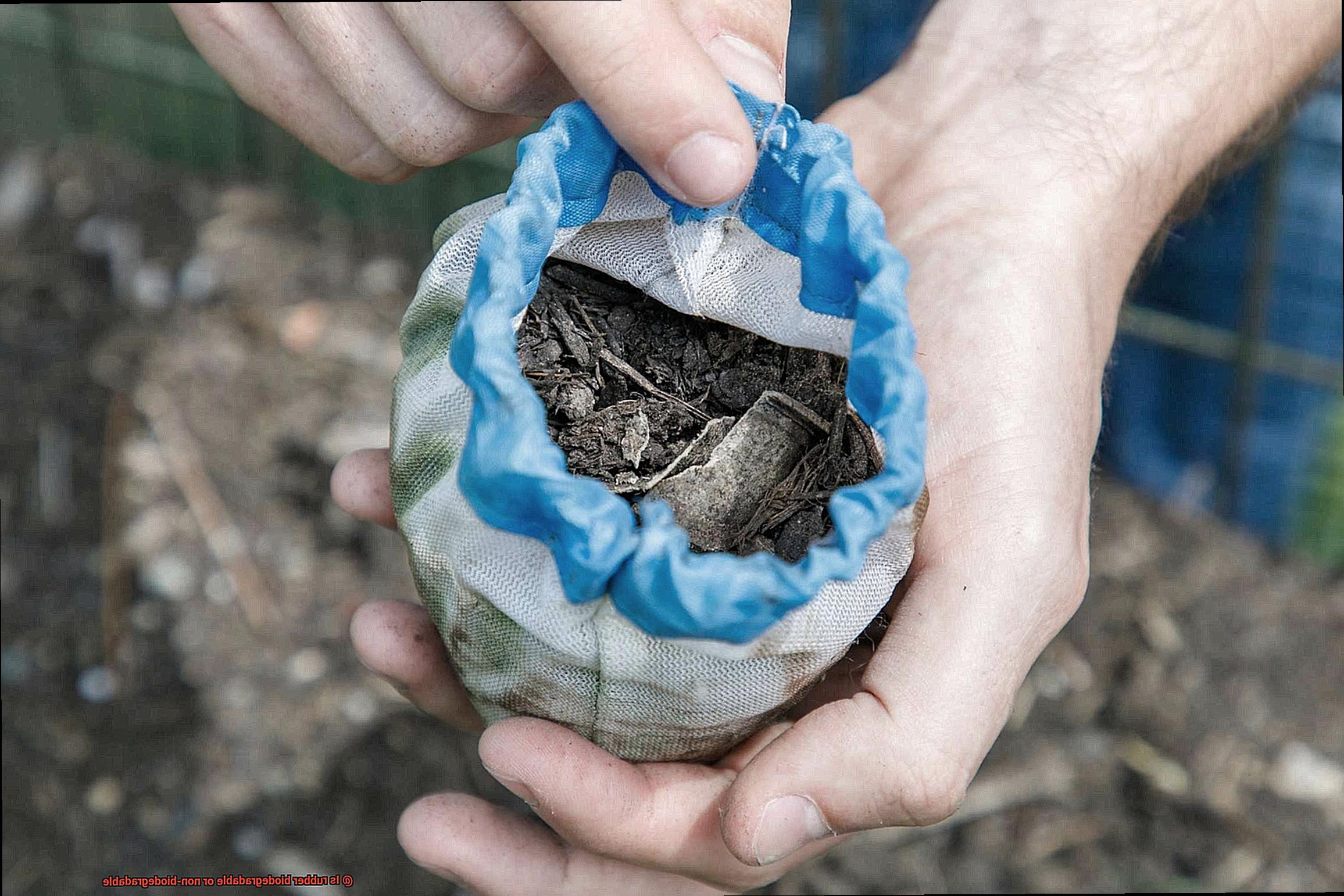
Is Synthetic Rubber Biodegradable?
Synthetic rubber is a man-made material that is created through chemical processes and is used in a variety of products, such as tires, shoes, and hoses. However, unlike natural rubber, synthetic rubber is not biodegradable. This means that it can take hundreds of years to break down in the environment.
The reason why synthetic rubber is not biodegradable is because it is made from materials that do not break down easily in nature. These materials include petroleum-based products such as styrene and butadiene. When synthetic rubber products are disposed of in landfills or other areas where they can come into contact with soil, they will not decompose like organic materials.
This poses a significant problem for the environment as any products made from synthetic rubber will remain in the environment for an extended period, contributing to pollution and waste. However, researchers are working on developing more environmentally-friendly versions of synthetic rubber. They are exploring the possibility of creating synthetic rubbers made from renewable resources such as plant-based materials. These types of synthetic rubbers may be more biodegradable than traditional versions.
Is Vulcanized Rubber Biodegradable?
While vulcanized rubber is not biodegradable in the traditional sense, there are still potential avenues for breaking it down over time.
First, let’s define what we mean by vulcanized rubber. This is a type of rubber that has undergone a process of treatment with sulfur or other curatives to make it stronger and more durable. This involves heating the rubber at high temperatures, which creates cross-links between the polymer chains, making it less likely to break down over time.
Unfortunately, this also means that vulcanized rubber is not typically biodegradable. The cross-links in vulcanized rubber are too strong for most microorganisms to break apart, so traditional biodegradation does not occur.
However, some exciting exceptions exist. Research has found that certain types of bacteria and fungi are capable of breaking down vulcanized rubber, although the process is slow and inefficient. Moreover, exposure to UV light can weaken the cross-links in vulcanized rubber, making it more susceptible to biodegradation over time.
It’s essential to note that while there are potential ways to break down vulcanized rubber over time, it is not practical or reliable enough to be considered a viable solution for disposing of large amounts of vulcanized rubber waste.
The Benefits of Using Biodegradable Rubber
Rubber is an incredibly versatile material that has become an integral part of our daily lives. From the tires on our cars to the soles of our shoes, rubber is everywhere. However, its production and disposal have significant environmental consequences. Traditional non-biodegradable rubber can take hundreds of years to decompose, causing it to accumulate in landfills and oceans. But there is a sustainable solution- biodegradable rubber.
The benefits of using biodegradable rubber are vast, making it a popular choice for eco-conscious individuals and businesses. Unlike non-biodegradable rubber, biodegradable rubber naturally breaks down when exposed to the environment. This means that it won’t pollute our precious planet with toxic waste.
Another advantage of using biodegradable rubber is that it promotes the conservation of natural resources. Traditional rubber is made from petroleum-based products, which are not only finite but also contribute to greenhouse gas emissions during production. In contrast, biodegradable rubber can be made from renewable resources like corn starch or soybeans, reducing our reliance on fossil fuels and lowering our carbon footprint.
But the benefits don’t stop there. Biodegradable rubber supports a circular economy where waste is reduced, and resources are conserved. After use, biodegradable rubber can be easily composted, creating nutrient-rich soil that can be used for farming or gardening. This means that we not only reduce waste but also provide a sustainable source of nutrients for future generations.
Challenges with Non-Biodegradable Rubber
Rubber is an incredibly useful material that we rely on heavily in our daily lives. Unfortunately, non-biodegradable rubber poses a significant environmental challenge. This type of rubber does not decompose naturally, which means it can create waste that doesn’t break down easily. As a result, there is an accumulation of rubber waste in landfills or natural environments that can have harmful effects on ecosystems.
One of the most pressing challenges with non-biodegradable rubber is that it takes up space in landfills. Rubber products are everywhere, from tires to sneakers and household items to industrial machinery, making up a significant proportion of waste. When these products reach the end of their useful life, they become waste that doesn’t break down easily. This leads to an accumulation of rubber waste in landfills or natural environments, which can have harmful effects on ecosystems.
Another challenge with non-biodegradable rubber is that it can release harmful chemicals into the environment over time. For instance, when tires degrade in landfills, they release toxic substances such as lead and zinc into the soil and groundwater. These chemicals can leach into nearby streams and rivers, contaminating water sources and harming wildlife.
Furthermore, recycling or reusing non-biodegradable rubber products can be problematic. While some rubber products can be melted down and reused to make new products, this process is often expensive and energy-intensive. Moreover, certain types of rubber cannot be recycled at all. Vulcanized rubber used in tires is an example of such rubber products, which must be disposed of in landfills or incinerated, contributing to air pollution.
The challenges with non-biodegradable rubber highlight the need for more sustainable alternatives. To reduce the impact of non-biodegradable rubber on the environment, we need to develop new materials that are biodegradable or easier to recycle. We should also find ways to reuse existing rubber products more efficiently.
3roITeXVWuE” >
Conclusion
In conclusion, rubber is an omnipresent material that has proven to be a vital component in various industries. Nevertheless, the question of whether rubber is biodegradable or non-biodegradable has been a topic of concern for many scientists and environmental enthusiasts worldwide.
When it comes to natural rubber, it’s worth noting that it’s extracted from the sap of rubber trees, making it a renewable resource. As such, natural rubber is an excellent example of a biodegradable material. Conversely, synthetic rubber and vulcanized rubber are not biodegradable. Synthetic rubber products can persist in landfills for hundreds of years while vulcanized rubber does not decompose naturally due to its chemical treatment.
The advantages of using biodegradable rubber are numerous; it supports a circular economy where waste is minimized, and resources are preserved. Biodegradable rubber can also be made from renewable sources like corn starch or soybeans, which reduces our dependence on fossil fuels and lowers our carbon footprint.
Non-biodegradable rubber poses significant environmental challenges as it takes up space in landfills and can release harmful chemicals into the environment over time. Recycling or reusing non-biodegradable rubber products can also be problematic since certain types of rubber cannot be recycled at all.
To reduce the impact of non-biodegradable rubber on the environment, we need to develop new materials that are biodegradable or easier to recycle. We should also find ways to reuse existing rubber products more efficiently.
